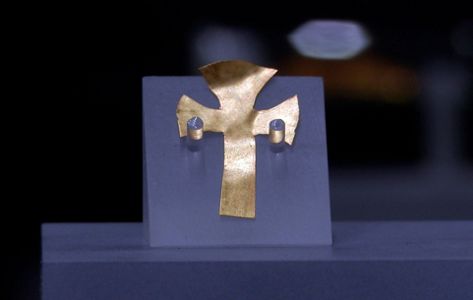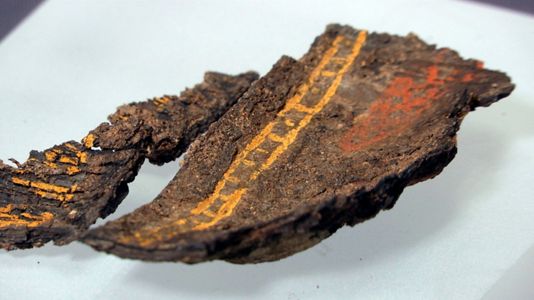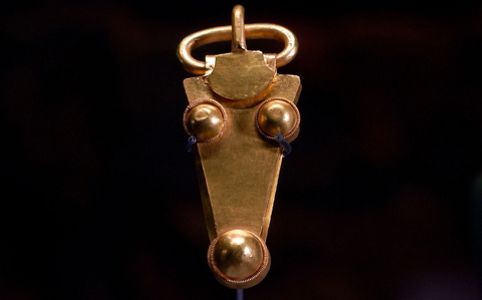SOUTHEND-ON-SEA, England (AP) — An underground chamber discovered accidentally by road workers appears to be the site of the earliest Christian royal burial ever found in Britain, archaeologists say, calling it the Anglo-Saxon equivalent of King Tutankhamun's tomb.
The chamber, uncovered between a road and a railway line in the southeastern English village of Prittlewell in 2003, turned out to be a 1,400-year-old tomb.
New details were published Thursday about the finding, which archaeologists say is the most important Anglo-Saxon burial discovery in more than 70 years.
Treasures unearthed at the site include a golden belt buckle, the remnants of a harp-like instrument known as a lyre, gleaming glassware and an elaborate water vessel from the eastern Mediterranean, perhaps Syria.
Researchers say the luxury items indicate the chamber's occupant was a man of high standing, possibly a prince. Two small gold-foil crosses found at the head of the coffin suggest a Christian burial.
"There are luxury imports that have come from as far away as Syria. Some of the raw materials might have even come as far away as Sri Lanka and the Indian subcontinent," said Liz Barham, a senior conservator at Museum of London Archaeology who worked on the dig.
"This is a really rich burial. It's a statement, it's a theatrical statement being made about the family, about this person."
Sophie Jackson, director of research and engagement at Museum of London Archaeology, said the discovery is "our equivalent of Tutankhamun's tomb." While the identity of its occupant is unknown, locals have nicknamed him the "Prittlewell Prince."
Fragments of tooth enamel — the only human remains uncovered — revealed he was over 6 years old, and the size of the coffin suggests he was about 5 foot 8 inches (1.73 meters) tall.
Jackson said the "best guess" is that it was Seaxa, brother of King Saebert, the first Anglo-Saxon king to convert to Christianity.
She said the burial came at a time when Christianity was vying in Britain with older pagan beliefs.
"They would have been just on the transition between having pagan burials with all your gear, but also having these crosses," she said.
The Anglo-Saxons were descendants of Germanic tribes who gradually invaded England by sea starting in the fifth century, after the collapse of the Roman Empire. They came to rule the country until the Norman conquest in 1066.
Dozens of artifacts will go on show Saturday at Southend Central Museum, near the burial site and about 40 miles (60 kms) east of London.
___
Jill Lawless in London contributed to this story.
Copyright 2019 The Associated Press. All rights reserved. This material may not be published, broadcast, rewritten or redistributed.






